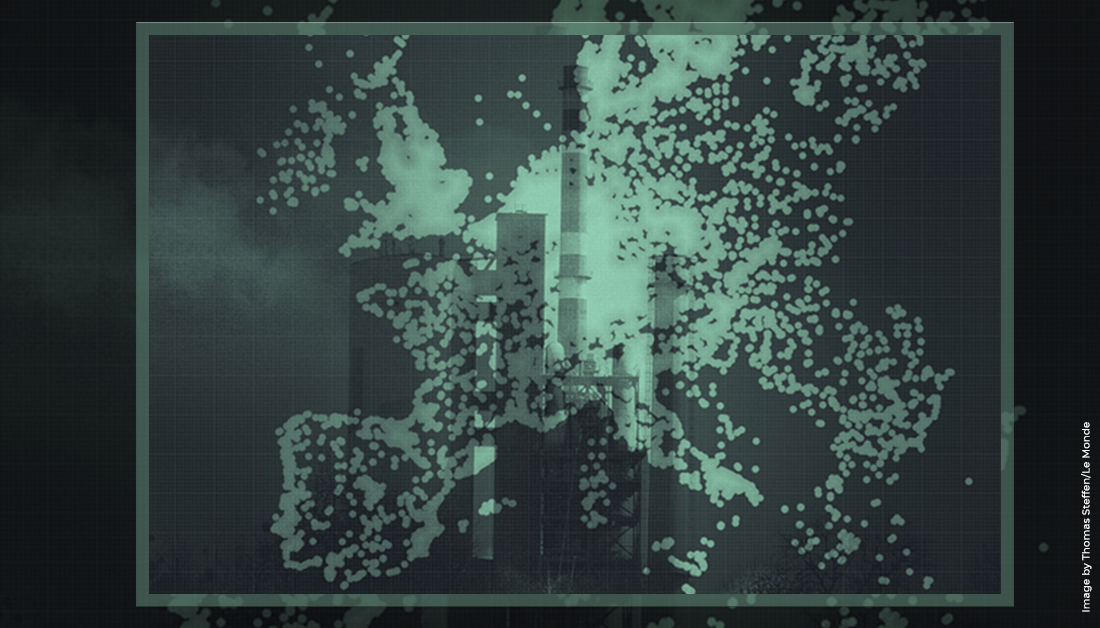Chemists call them PFAS, short for poly and perfluoroalkyl substances, a class of 4,000-plus chemicals used in commercial products for decades. Others call them “forever chemicals” due to the near impossibility of getting rid of them once they enter the environment.
Just two weeks after the European Chemicals Agency (ECHA) published a proposal to ban all PFAS, a months-long investigation by 18 European newsrooms reveals that the chemicals contaminate more than 17,000 sites across the continent.
The Forever Pollution Project shows that an additional 22,000 sites are presumed contaminated due to current or past industrial activity. That is way more contamination all across Europe than has been publicly known.
The journalists gathered 100 datasets and filed dozens of freedom-of-information requests to build a first-of-its-kind map of PFAS contamination in Europe.
The project shows that 20 manufacturing facilities and more than 2,300 sites in Europe are PFAS hotspots — places where contamination reaches levels considered hazardous to the health of people exposed to them.
‘Forever pollution’: Explore the map of Europe’s PFAS contamination https://t.co/uSgsRlvLzn
— Le Monde in English (@LeMonde_EN) February 23, 2023
It is extremely expensive to eliminate these chemicals once they have found their way into the environment. The cost would likely reach tens of billions of euros. In several places, authorities have already given up and decided to keep the toxic chemicals in the ground because cleaning them up is impossible.
PFAS are used in many industries, from Teflon to Scotchgard to make non-stick, non-stain or waterproof products. They don’t degrade in the environment and are very mobile, so they can be detected in water, air, rain, otters and cod, boiled eggs and humans.
PFAS are linked to cancer and infertility, among a dozen other diseases. Scientists estimate that PFAS put a burden of between €52 and €84 billion euros on European health systems each year.
PFAS emissions are not yet regulated in the EU, and only a few member states have adopted limit values. All the PFAS experts interviewed for the investigation were adamant that the thresholds set by the EU for implementation in 2026 are way too high to protect human health.
🏭💧After months of work, the Forever Pollution Project by @lemondefr and its 17 partners reveals the staggering extent of Europe’s contamination by forever chemicals #PFAS #ForeverPollution #Crossborderhttps://t.co/Xjw9Nfp679
— Stéphane Horel (@stephanehorel) February 23, 2023
The Forever Pollution Project also uncovered an extensive lobbying process to water down the proposed EU-wide PFAS ban.
Several dozen freedom-of-information requests in Brussels and other European cities revealed that for months, more than 100 industry associations, think tanks, law firms and major companies have been working to influence the European Commission and member states to weaken the forthcoming PFAS ban.
Over several months of investigation, the Forever Pollution Project dissected over 1,200 confidential documents from the European Commission and ECHA and hundreds of open sources.
Analysing these documents, the reporters behind The Forever Pollution Project can show how companies from Chemours to 3M or Solvay are trying to exempt their products from the ban.
The Forever Pollution Project was initially developed by Le Monde in France; NDR, WDR and Süddeutsche Zeitung in Germany; RADAR Magazine and Le Scienze in Italy; and The Investigative Desk and NRC in the Netherlands.
Stories were further investigated and published by Knack (Belgium), Denik Referendum (Czech Republic), Politiken (Denmark), YLE (Finland), Reporters United (Greece), Latvian Radio (Latvia), Datadista (Spain), SRF (Switzerland), and Watershed Investigations / The Guardian (UK).
Arena for Journalism in Europe provided support with cross-border collaboration. The project received financial support from IJ4EU and Journalismfund.eu.
At http://lemde.fr/PFASmap, you can find all 17,000 contamination sites and all 22,000 presumptive contamination sites. To see the reporting from all the partners, visit www.foreverpollution.eu.
In October 2023, the investigation won second place in the Kevin Carmody Award for Outstanding Investigative Reporting.
In November 2024, Le Monde investigative journalist Stéphane Horel, who coordinated the project, was named 2024 European Science Journalist of the Year by the European Federation for Science Journalism.
